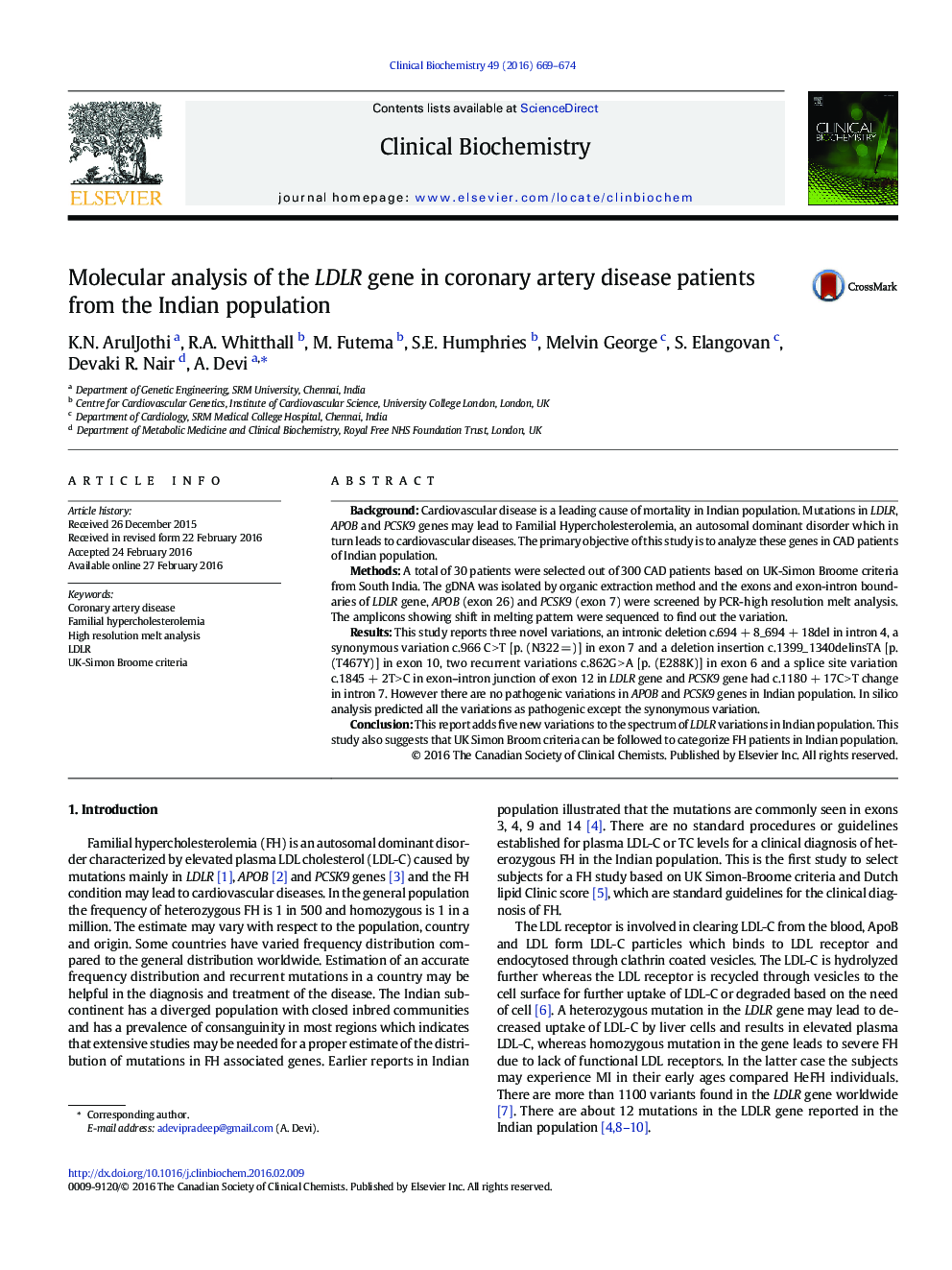| کد مقاله | کد نشریه | سال انتشار | مقاله انگلیسی | نسخه تمام متن |
|---|---|---|---|---|
| 1968550 | 1059725 | 2016 | 6 صفحه PDF | دانلود رایگان |
• This work adds 5 variations in LDLR gene for the first time in Indian population.
• The cut off levels for categorization of familial hypercholesterolemia, specific for Indian population is discussed.
• The effect of an intronic deletion and its interaction with splicing factors was enumerated and its pathogenicity is predicted by in silico analysis.
• As expected, ApoB and PCSK9 genes were not found with any disease causing variations in this population.
BackgroundCardiovascular disease is a leading cause of mortality in Indian population. Mutations in LDLR, APOB and PCSK9 genes may lead to Familial Hypercholesterolemia, an autosomal dominant disorder which in turn leads to cardiovascular diseases. The primary objective of this study is to analyze these genes in CAD patients of Indian population.MethodsA total of 30 patients were selected out of 300 CAD patients based on UK-Simon Broome criteria from South India. The gDNA was isolated by organic extraction method and the exons and exon-intron boundaries of LDLR gene, APOB (exon 26) and PCSK9 (exon 7) were screened by PCR-high resolution melt analysis. The amplicons showing shift in melting pattern were sequenced to find out the variation.ResultsThis study reports three novel variations, an intronic deletion c.694 + 8_694 + 18del in intron 4, a synonymous variation c.966 C > T [p. (N322 =)] in exon 7 and a deletion insertion c.1399_1340delinsTA [p. (T467Y)] in exon 10, two recurrent variations c.862G > A [p. (E288K)] in exon 6 and a splice site variation c.1845 + 2T > C in exon–intron junction of exon 12 in LDLR gene and PCSK9 gene had c.1180 + 17C > T change in intron 7. However there are no pathogenic variations in APOB and PCSK9 genes in Indian population. In silico analysis predicted all the variations as pathogenic except the synonymous variation.ConclusionThis report adds five new variations to the spectrum of LDLR variations in Indian population. This study also suggests that UK Simon Broom criteria can be followed to categorize FH patients in Indian population.
Journal: Clinical Biochemistry - Volume 49, Issue 9, June 2016, Pages 669–674
